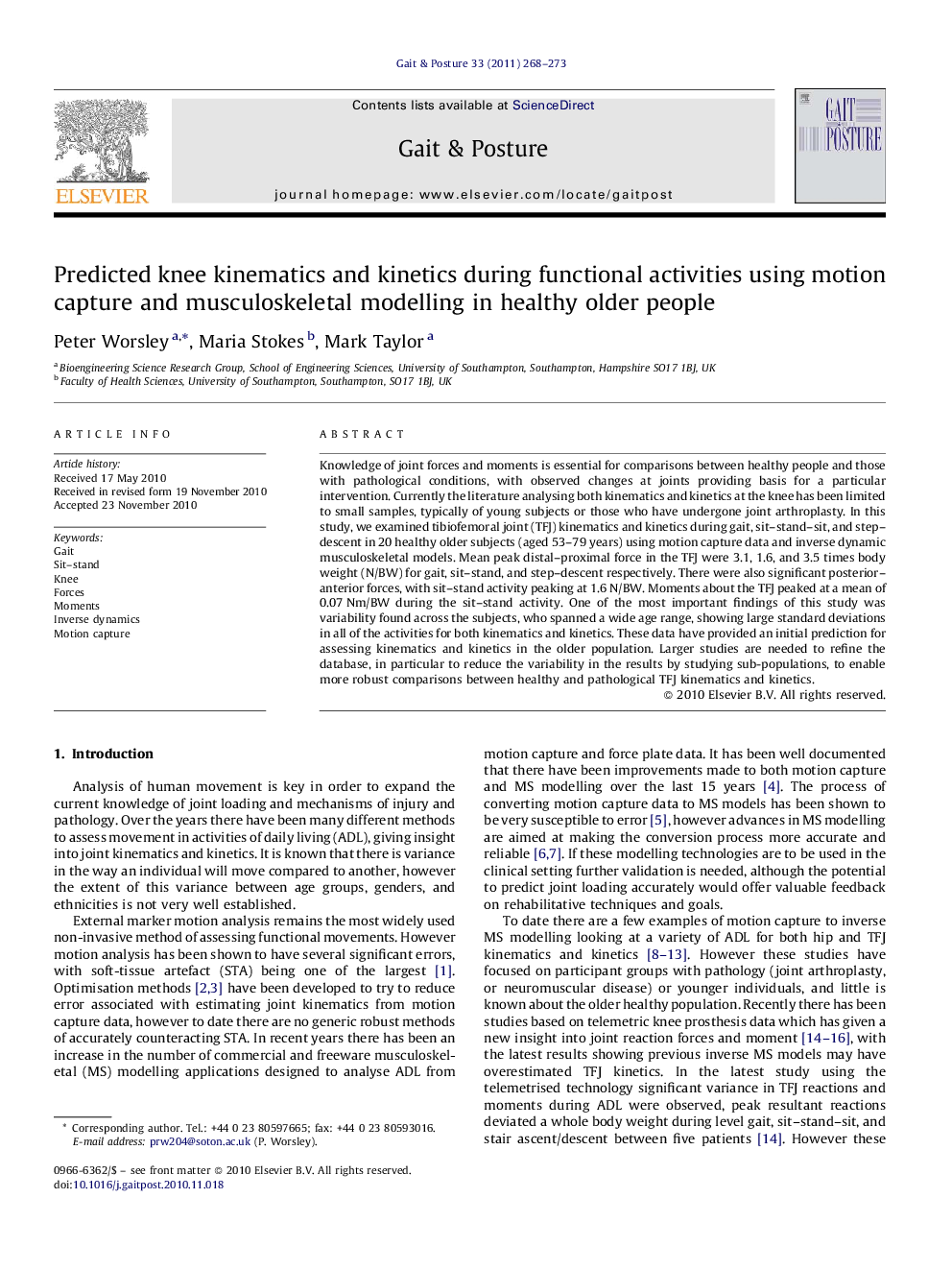| Article ID | Journal | Published Year | Pages | File Type |
|---|---|---|---|---|
| 6208262 | Gait & Posture | 2011 | 6 Pages |
Knowledge of joint forces and moments is essential for comparisons between healthy people and those with pathological conditions, with observed changes at joints providing basis for a particular intervention. Currently the literature analysing both kinematics and kinetics at the knee has been limited to small samples, typically of young subjects or those who have undergone joint arthroplasty. In this study, we examined tibiofemoral joint (TFJ) kinematics and kinetics during gait, sit-stand-sit, and step-descent in 20 healthy older subjects (aged 53-79 years) using motion capture data and inverse dynamic musculoskeletal models. Mean peak distal-proximal force in the TFJ were 3.1, 1.6, and 3.5 times body weight (N/BW) for gait, sit-stand, and step-descent respectively. There were also significant posterior-anterior forces, with sit-stand activity peaking at 1.6Â N/BW. Moments about the TFJ peaked at a mean of 0.07Â Nm/BW during the sit-stand activity. One of the most important findings of this study was variability found across the subjects, who spanned a wide age range, showing large standard deviations in all of the activities for both kinematics and kinetics. These data have provided an initial prediction for assessing kinematics and kinetics in the older population. Larger studies are needed to refine the database, in particular to reduce the variability in the results by studying sub-populations, to enable more robust comparisons between healthy and pathological TFJ kinematics and kinetics.
